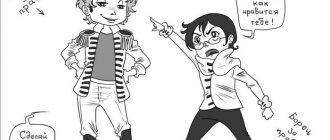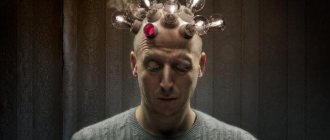Consciousness – in philosophy, this briefly characterizes the process of the emergence of automatism. A person remembers certain actions at the level of consciousness and repeats them under strict control. With its help, he gets to know the world, masters certain knowledge, which after a while becomes automatic. The skill begins to manifest itself unconsciously, which is what long-term training and frequent repetition lead to. An example of a transition from conscious to unconscious is performing dance movements, playing the piano, or driving a car.
When a person learns, he controls his every action. After learning for some time, he feels tension while repeating what he has learned. Later, the task execution becomes automatic. An individual can repeat the process at any time, without even paying attention to it. Consciousness and the unconscious in philosophy are in close proximity to each other.
The transition of a conscious action to automatism is called subconscious. This is the stage between learning and perfect knowledge.
Consciousness in the human psyche
Definition 1
Consciousness is the highest form of reflection of objective reality, a person’s way of relating to himself and to the world.
The human psyche arose and was formed as the ability of living organisms to interact with the world around them. It is given to a person from the moment of his birth in a ready-made form, and its development occurs in the process of communication with other people.
Figure 1. Conscious and unconscious in the human psyche. Author24 - online exchange of student work
Are you an expert in this subject area? We invite you to become the author of the Directory Working Conditions
The most important property of the psyche, its highest form, is consciousness. Thanks to consciousness, a person understands the world more deeply, understands what cannot be seen from direct observation, a person can draw conclusions and conclusions. Consciousness constructs, integrates, and collects the diverse and varied phenomena of human life into a holistic way of being, making a person a Human.
The main characteristic of human existence is awareness.
Consciousness has its own characteristics, in particular, it:
- makes it possible to distinguish between subject and object, ensures the formation of activity goals, contains a body of knowledge about the surrounding world;
- allows for preliminary mental construction of actions;
- assists in anticipating the results of actions;
- regulates human behavior and activities;
- emotionally evaluates interpersonal relationships.
Consciousness performs certain functions - reflective, creative, transformative, evaluative, reflective, regulatory, communicative.
The structure of consciousness is based on intelligence, which represents mental abilities, knowledge and skills necessary for solving mental problems. The mental abilities of the intellect include thinking, memory properties, attention properties, perception properties, and the main element of consciousness is knowledge. Erudition, competence, and mental work skills certainly influence intelligence, but its level also depends on the result of assimilating culture and mastering spiritual universal values.
Finished works on a similar topic
Course work The relationship between the conscious and unconscious in the human psyche 430 ₽ Abstract The relationship between the conscious and unconscious in the human psyche 230 ₽ Test work The relationship between the conscious and unconscious in the human psyche 190 ₽
Receive completed work or specialist advice on your educational project Find out the cost
The purposefulness of a person’s actions is determined by motivation, i.e. a set of motives, and the source of its activity are needs, where the choice of goal is the central point.
Motivation can be strong or weak, stable or unstable.
The sensory-emotional sphere of a person, which includes feelings, moods, affects, experiences, emotional stress, expressing his subjective attitude to any phenomena, situations, to himself, to other people.
The ability to consciously regulate behavior is will. Specific qualities of consciousness are formed and manifested through language.
Mindfulness and Long-Term Thinking
The main criterion for awareness is long-term thinking. The more awareness, the more clearly a person predicts the future.
In an unconscious state, a person does not see the consequences of his actions.
The most vile traitors always hide among unconscious people. Unawareness disables the manifestation of higher human feelings: empathy, love, altruism. The intellect suffers.
Instead, we get callousness, fear, self-centeredness and stupidity.
A person performs actions that he desires in the future. Their consequences are sometimes irreparable.
It always takes a long time for an unconscious person to “catch up.”
What is visible from the position of awareness, regardless of the health of the unconscious, becomes obvious in the unconscious itself only when its state changes.
Only consciousness can make a long-term forecast.
The unconscious in the human psyche
Not all processes occurring in the human psyche are realized, because in addition to consciousness, a person also has a sphere of the unconscious. It is presented in the form of the individual and collective unconscious. They oppose consciousness and at the same time are in inseparable connection with it. The subconscious dominates the unconscious life of a person, which stores all information.
Note 1
Unconscious mental phenomena, states and actions lie outside the sphere of the human mind and cannot be controlled by consciousness.
Unconscious mental processes include unconscious sensations, thinking, unconscious (inner) speech, dreams, reveries, dreams, unconscious visual sensations.
In all mental processes and states of a person, one way or another, there is an unconscious principle. Unconscious sensations include sensations of balance and muscle sensations. Involuntary reflective reactions in the visual and auditory systems are caused by unconscious visual and auditory sensations.
Sometimes a person has a feeling that he has already seen some object, object or phenomenon, a feeling of familiarity associated with recognition of what he had previously seen - this is how unconscious images and perceptions can appear.
There are unconscious thoughts, feelings, and unconscious memory. It controls imagination, thinking, attention, it determines the content of thoughts at the moment to which attention is directed.
The individual unconscious has a connection with instincts, for example, the instinct of self-preservation and reproduction.
The concept of the individual unconscious was developed by S. Freud, and the concept of the collective unconscious was developed by his student C. Jung.
K. Jung argued that the memory of the history of the entire human race lives in the depths of his soul and, in addition to the inherited parental properties, the properties of his distant ancestors live in a person. The collective unconscious of all people is identical and forms the universal basis of a person’s mental life - this is already the deepest level of the psyche. The unconscious refers to the deep level of the psyche, but in the human psyche there are no hard boundaries between its different levels, because the human psyche functions as a single whole.
The experience of all humanity is imprinted in the collective unconscious in the form of archetypes, which are universal ways of thinking, worldview, and behavior. They are not detected directly and make themselves known through dreams, premonitions, and visions. K. Jung gave them original and conventional names - Self, Person, Shadow, Mother, Child, God, Death, etc.
Note 2
The main archetype is the Self, which represents the core of the psyche around which all others are united.
A number of areas of modern science believe that there are no insurmountable conflicts and contradictions between consciousness and the unconscious, since they are components of the human psyche.
Note 3
Some formations relate to both consciousness and the unconscious, and equally, therefore scientists believe that the unconscious should be considered as a part of consciousness.
Me and my desires
Unawareness is slavery to your momentary desires.
Leading an unconscious life always leads to associating oneself with one's lower needs.
Awareness is the setting of one’s “I” over desires, which, most often, do not reflect our true essence.
This is an opportunity to put yourself above the system that is your body.
In a state of unconsciousness there is no “I”. What a person associates with his own personality is constantly changing.
A conscious person leads the body towards the realization of aspirations determined by the mind. Unconscious - driven by orders from different senses.
The true “I want” is determined only in consciousness!
But not in the unconscious.
The popular call “Do what you want” is perceived differently by the mind and the unconscious.
For example, a conscious person puts his “I” above immediate feelings. He understands that he wants to make his contribution to this world, develop, find love, create conditions for maintaining and improving his health, acquire a favorite activity, become a professional in it and earn a certain amount of money for a happy life. Needs may differ, but they are always global in the scale of human life.
The unconscious person comes to the conclusion that she needs to buy beer, eat ice cream, troll online, or get any other momentary thrill in accordance with the level of development of the unconscious.
Hedonism does not lead to happiness precisely because it is not conscious. It does not satisfy the true needs of the individual. In an unconscious state, you cannot even see them.
Lack of awareness is fixable
For everyone who recognizes themselves in the description of an unconscious person, there is good news: it can be fixed!
We all go through a phase of unawareness during childhood. The child does not think in terms of long-term goals; he is not able to understand the true reasons and meanings of his actions.
While consciousness has not yet developed in the little man, his survival is ensured by his parents.
An adult cannot afford to remain unconscious. However, each of us is, to one degree or another, susceptible to unconscious states. You just need to work through them without reproaching yourself for wrong actions or thoughts.
Developing mindfulness is hard work. But it always pays off by achieving higher tastes in life.
Mindfulness and Love
A person confuses love with a lot of other states. Sympathy, love, emotional dependence, habit, sense of ownership. All this in popular culture is called love.
But love does not exist in an unconscious state. Feelings pass quickly, as they are an element of the unconscious perception of another person.
Love is a conscious renunciation of selfishness in favor of another person.
And this is a completely different level of feeling.
The less aware a person is of himself, the less true love he has.
Therefore, if you strive to find love, first try to gain awareness.
Levels
The ideas of Freud and Jung made it possible to expand the idea of the unconscious through the efforts of the Italian psychologist and psychiatrist Roberto Assagioli (1888 - 1974). Based on his research, a new discipline emerged - psychosynthesis. Roberto presented in his work three main levels that demonstrate the unconscious in human psychology.
Levels of the unconscious in psychology
| Level | Characteristic |
| Lower | Includes the simplest forms of mental activity. With their help, the individual controls:
|
| Average | The content of the level includes elements that freely penetrate into consciousness in a person’s waking state. The average level of the unconscious determines the development of mental activity, increasing the possibilities of fantasizing and assimilating the experience gained. |
| Higher | Defined as the superconscious level. Thanks to it, the following appear:
|
“Internal Matrix” VS intelligence
So, we have already found out that rationalization is a process of mental self-defense, through which we justify our actions, while rationalizing our mind. Next, we remember that life is essentially a realistic dream of the mind. And the more sensitive an individual is, the more the mind twists to keep us within the boundaries of our rationalization.
During sleep, the perception of existence is in such a sluggish working state that it is ready to believe in the most primitive tricks of our mind. That’s why our brain doesn’t spend much resources to create a realistic matrix of external reality. Therefore, when both our body and our mind are resting, the level of elaboration of projections is minimal and primitive, and that is why we often see the wildest nonsense in our dreams, which, however, during sleep we often believe and accept as reality.
The more conscious a person is, the higher the level of his rationalization, the more complex projections his mind creates in order not to be exposed. By the way, this is also associated with a high level of intelligence. In other words, a person with Neanderthal development does not need much to believe in others. He may not notice any catch even if he loses his mind or sniffs hallucinogenic fumes. While a reasonable and not stupid person knows a million proofs that the world around him is real, although in fact it is not so. Bravo, mind!
From all this one could conclude that a person with high intelligence is, as it were, closer to the true understanding of existence, but still the opposite. Such a person simply fools himself a hundred times more, while blessed people are actually closer to the truth.
We live inside our heads
Your psyche is your reality. Objective judgments received by the senses - vision, hearing, smell - are secondary, because only inside our skull is the opinion born that green grass is good, and black grass is somehow not so good. Good-bad, good-evil, beautiful-ugly - all these are subjective thoughts that are in no way connected with the objective state of the world.
That is, it turns out that you yourself are the measure of all things. Only through the prism of consciousness (and subconscious) do you evaluate everything around you. So, it turns out that there is nothing objective in this world, or rather, everyone lives in their own world, and in their own universe, and, moreover, they themselves do not know the rules of their own existence, and they themselves do not know how to control their own existence.
Sigmund Freud's theory
First, let's talk about the structure of personality in the concept of psychoanalysis. So, according to Freud’s theory, personality consists not only of a person’s consciousness, but of several interacting components.
The super-ego (super-ego) is an unconscious part that is acquired even before the appearance of speech in a person. It includes various norms of behavior, taboos and prohibitions formed by culture. This also includes all kinds of family prohibitions, which cause the individual to feel guilty and painfully afraid.
The id (It) is also the unconscious and most primitive part, which includes all kinds of desires and libido. These are extremely ancient, archaic drives that are mostly aggressive and filled with sexuality.
The ego (I) is a conscious component that reacts to what is happening in reality and helps a person adapt to it. It is a kind of intermediary between two other parts, both of which are unconscious. The ego is forced to constantly bifurcate in order to ensure the interaction of the Super-Ego and Id, between the biological desires inherent in everyone and the moral standards that society imposes.
In principle, we can consider two main aspects of the unconscious according to Freud. One of them, the unconscious and non-verbalized part, is an integral element of the human psyche. Thus, the latter is divided into two disproportionate (this will be discussed later) parts. The other side is divided, in turn, into two ego states - Super-Ego and Id.
Sigmund Freud
So, this is an Austrian neurologist who became the founder of psychoanalysis. His ideas still cause constant discussions, both in scientific and lay circles. Of course, he became an innovator in the field of psychiatry.
Let's give a short biographical information. Freud was born in 1856 in Freiburg into the family of a textile merchant. Soon after Sigmund's birth, the family had to move to Vienna. From childhood, great hopes were placed on the boy, and he read completely non-children's literature - Kant, Hegel, Shakespeare. In addition, he was very good at learning foreign languages.
After studying at the gymnasium, he entered the medical faculty, but did not feel any desire for this field of science. In fact, the young man chose for himself the lesser evil among the traditional fields of activity for Jews of that time - trade, medicine and law. After graduation, Sigmund intended to continue his academic career, but was forced to give preference to work and soon opened his own office, in which he worked as a neurologist.
In 1885, Freud got an internship with the psychiatrist Charcot, from whom he adopted the technique of hypnosis. In addition, he began to use conversation when working with patients, allowing patients to fully express their emotions. This method will later be called the “free association method”. He allowed the insightful doctor to understand the problems of patients and free them from neuroses.
Gradually, Freud began to publish his books, which at first caused rejection, and then a wide resonance in society: “The Interpretation of Dreams”, “Psychopathology of Everyday Life”, etc. A circle of students formed around him, among whom the famous split occurred in 1910. The main stumbling block was the Freudian idea that the psychoses of the human personality are associated primarily with the suppression of sexual energy.
Sigmund Freud married relatively late and had six children. The famous psychoanalyst died of cancer in 1939.
Unconscious automatisms
The processes included in the subclass of unconscious automatisms are of a dual nature:
- never realized before (fundamentally not realized),
- once conscious, but at the moment occurring automatically (skills).
Examples of fundamentally unconscious ones: a child’s sucking movements, blinking, eye convergence, grasping objects, walking and much more. Examples of skills: playing a musical instrument, writing, speaking a foreign language, and an endless number of other skills.
It is worth noting that psychologists distinguish in the structure of consciousness:
- focus of consciousness (the most important thing at the current moment in time),
- periphery of consciousness (weak control by consciousness is exercised),
— the boundary of consciousness (the processes located here can either leave the field of human consciousness or enter it),
- unconscious.
Developed skills usually “balance” on the border of consciousness. If a person begins to make a lot of mistakes (when tired, for example, or when the activity becomes more complicated), then the skill again falls into the field of consciousness, to its periphery or even into focus. The skill is controlled, improved, and then returns again to the border of consciousness. This is what distinguishes skills from fundamentally unconscious processes, in that they “wander.”
Various examples of automatisms:
- when reading any text fluently, we do not think about the outline and meaning of individual letters, but “immediately” perceive the meaning of what we read,
- a radio operator working with Morse code, perceiving the sound of short and long signals, completely freely translates them into a logical combination of letters and words,
— entering a dark room, the hand “itself” reaches for the switch.









